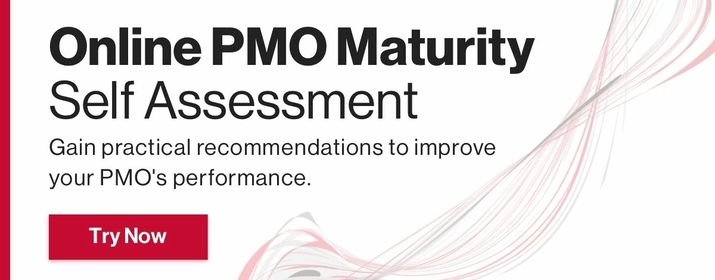A Recommended Approach to Reviewing and Uplifting Your PMO Capability
3 Ways to Diagnose Internal Capability Shortages
MetaPM Team
An effective PMO can provide incredible value to businesses, regardless of their size, industry focus and age. Today, organisations maintain their competitive edge by implementing proven methodologies and support for their projects.
But how do you uplift your PMO capability?
In this article, we’ll examine what makes a PMO effective and outline an approach for reviewing and uplifting your PMO capability.
PMO Predicaments: 2 Case Studies
Before we dive in, let’s look at a couple of PMO case studies.
Client 1
Client 1 is experiencing a lack of visibility across the portfolio of capital works, and projects/programs are not consistently scheduled or delivered. These problems are compounded by a lack of capability in planning and resource management.
The business relies on external capability to support the newly established EPMO, which was created to solve these issues. The organisation needs to take a more holistic approach instead of merely establishing tighter project controls.
Client 2
Client 2 is struggling with different issues. Their project management offerings don’t align with the primary delivery streams (ITS, Property Services, HR and BPI). Also, the lines between delivery PMOs and the EPMO are not always clearly articulated or understood.
Executives have noticed an inconsistent application of organisational frameworks and practices within and across project delivery streams. Functional COE’s are disparate across the portfolio and not aligned with EPMO project services. Furthermore, project initiation is often piecemeal, and there’s a lack of visibility of the project pipeline at the portfolio level.
Your PMO
You might recognise some of your organisation’s struggles in these two case studies. Or perhaps you feel that something is off, but you can’t quite put your finger on it.
To assess your PMO’s capability and make a plan, first, we’d recommend conducting some form of PMO assessment, to enable you and your team to efficiently and effectively understand what’s working, what’s not and identify any gaps. An assessment can be used as a way of gaining insights from your key stakeholders, to help create greater awareness, importance and value that having a PMO brings.
Conducting a PMO Maturity Assessment
Approach your PMO evaluation as you approach other projects.
Initial ‘Needs Assessment’ and Engagement Planning
Like any project, conducting a PMO assessment requires deliberate management with an intended ROI, budget, and established team and scope. Having a nominated sponsor is critical when you begin any project, including a PMO maturity assessment, and all stakeholders need a clear vision and alignment of purpose.
Key activities
- Create a knowledge share repository
- Gather information
- Hold a project sponsor validation meeting
- Review and agree on benefits and project ROI
- Establish influencers & objectives
- Prepare a project plan
- Prepare and hold a kick-off meeting with all stakeholders and teams.
Key deliverables
- Project objectives
- Stakeholder analysis
- Knowledge and document store
- Benefits & ROI model
- Solution design document & plan.
‘Current State’ Assessment
After you’ve set your project up for success, it’s time to use the P3O Framework to enhance organisational value. This segment aims to identify areas for PMO improvement through analysis of historical and cultural influencers, organisational structure, and operational readiness.
Key activities
- Conduct ‘as is’ meetings and workshops
- Review essential templates, tools and processes
- Complete a current state assessment analysis
- Prepare your findings and recommendations
- Define the next steps in your assessment
- Complete target state planning.
Key deliverables
- Kick-off meeting pack
- Current state assessment
- Target state planning schedule.
Future Target State Design
With all this preparatory work behind you, you’re ready to define and design a desired future ‘Target State’ of PMO capabilities.
Drive adaptive and responsive future state readiness that supports the most effective transformation from your current to your desired future operational state.
Key activities
- Conduct ‘To be’ meetings and workshops
- Complete a Target State roadmap analysis and development document
- Present your summary of findings and Target State recommendations
- Hold an ‘Agreed Quick Wins’ Facilitated Sponsor and Stakeholder workshop.
Key deliverables
- Summary of findings, recommendations and next steps
- An agreed list of prioritised actions, including quick-wins PMO uplift initiatives.
PMO Capability Uplift Road Map and Plan
With your Future Target design in hand, you’re ready to create a roadmap for practical improvement. Balance your readiness plan with the project’s strategic objectives and desired business outcomes.
Where appropriate, introduce quick wins to deliver improvements aligned to future state outcomes. These quick wins give your team confidence and help everyone to see immediate progress.
Key activities
- Review and approve Target State roadmap
- Develop your implementation plan
- Implement the roadmap.
Key deliverables
- Target State roadmap
- Implementation plan
- Business case.
Why Work with MetaPM?
Your business already has some strong PMO capabilities, and we can help you to identify what’s working well and what can be improved. Our focus will be on identifying and delivering priority PMO functions and change that add the most significant value to the organisation’s project portfolio.
We have developed an approach that facilitates greater buy-in from the broader project delivery communities and helps move the organisation to the next level of integrated PMO capability and maturity. To learn more about our approach or to schedule a consultation, let’s get in touch! We look forward to working with you.

Weekly Newsletter
Subscribe to our newsletter today to keep up to date on what’s happening.

